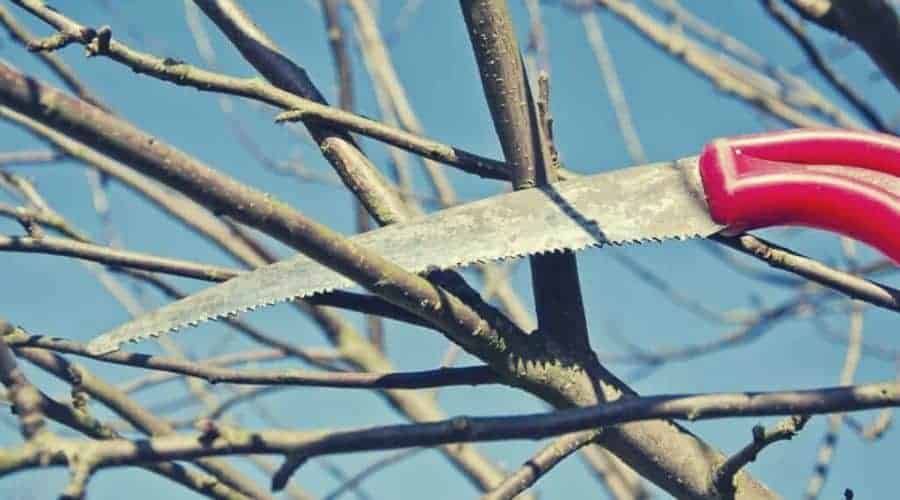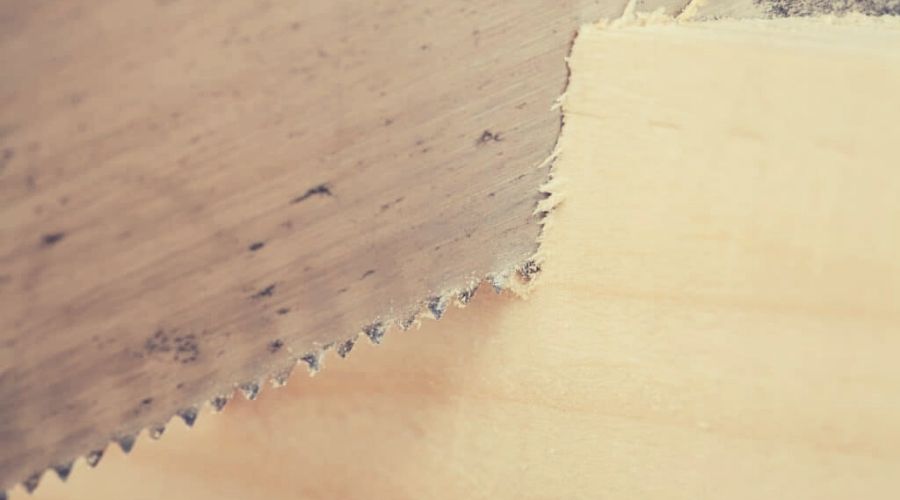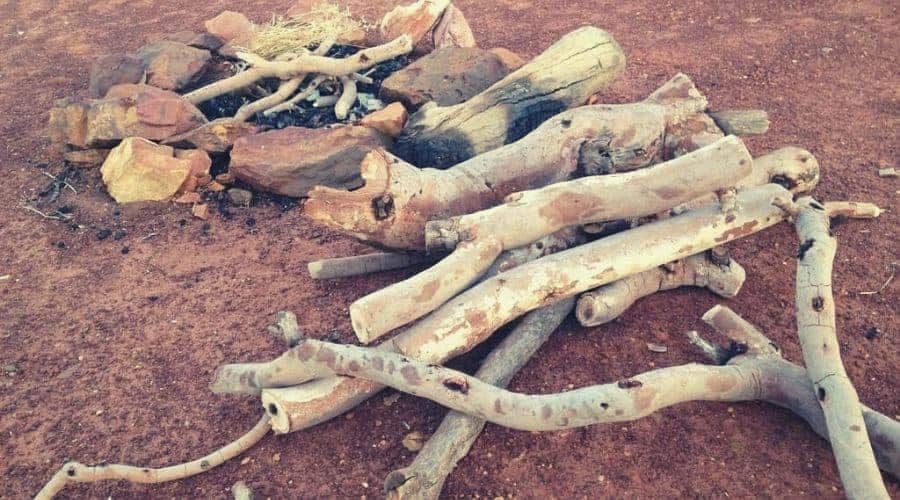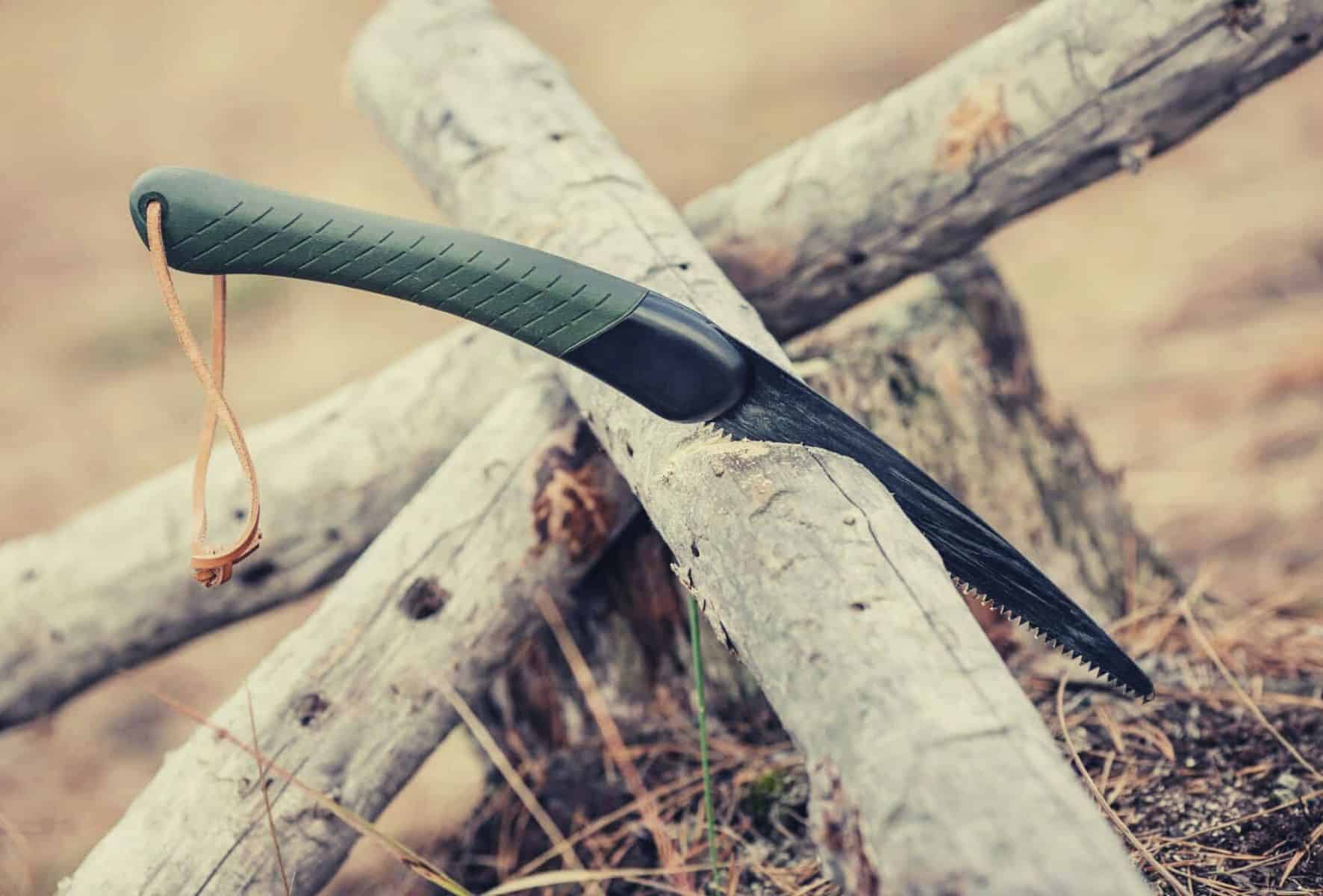A good saw is an essential survival tool every backpacker should have in their kit. Except for an axe, there’s no easier way to chop up wood for a campfire or build a temporary shelter than with a reliable saw. Luckily for modern backpackers, there are plenty of lightweight, easy-to-pack, and strong saws on the market today.
In our comprehensive reviews of the top 6 models, highlighting their features, efficiency, and shortcomings, the Corona Razor stood out as the top choice. Other highly recommended options on our list include the Bahco 396-LAP Laplander, Silky POCKETBOY 130, Gerber Freescape Camp Saw, Nordic Pocket Chainsaw, and the Sportsman Pocket Chainsaw.
To help you choose your ideal saw, we’ll explain what different types of saw there are, as well as key features to look out for such as curved or straight blade edges and teeth per inch. We’ll also cover saw maintenance, safety tips to ensure long-lasting and safe operation, the Leave No Trace (LNT) ethics of sawing in the backcountry, as well as why a saw is indispensable for any backpacking trip.
Do
Don’t
Table of Contents
Which model is the best backpacking saw?
In our quest to find the best, we tested many backpacking saws on the trails, and shortlisted the following five favorites.
- Corona Razor Tooth Folding Saw
- Bahco 396-LAP Laplander Folding Saw
- Silky Folding Landscaping Hand Saw POCKETBOY 130
- Gerber Freescape Camp Saw
- Nordic Pocket Chainsaw
- Sportsman Pocket Chainsaw
Corona Razor Tooth Folding Saw
Editor’s ChoiceThe Corona Razor Tooth Folding Saw is extremely tough, versatile, and convenient making it perfect for beginner backpackers and winning it our editor’s choice award.
This saw weighs about 12 ounces and has a blade that measures 7 inches. If you don’t want a saw that long, Corona also manufactures saws in the 8 and 10-inch ranges.
Corona’s Folding Saw gets its power from a curved, high carbon steel blade and its long teeth. This combination helps the blade’s teeth dig deeper on each pull stroke. While this blade’s design is ideal for pruning work, it will also serve you well for cutting down larger logs in the wild.
To protect this blade against wear-and-tear, manufacturers heat treated the blade and sealed it with a chrome finish. All of the teeth on the Corona Folding Saw have also been triple-ground and impulse-hardened to help them withstand even the toughest woods.
As for the grip, it’s ergonomically designed with a plastic injection-molded non-slip black cover as well as a hand stop for safety. Speaking of safety, there’s a lock button on the handle to hold the blade in place whether it’s in use or closed.
One negative about the Corona Folding Saw’s design is that the teeth only cut on every pull stroke. Some campers prefer their blade’s teeth to work both on the push and pull strokes to save time. However, since the Corona is made with such high-quality steel, you most likely won’t notice a difference in strength when you’re using this folding saw.
PROs
- Strong high carbon steel used to make the blade.
- Curved blade design ideal for pruning work.
- 12 ounces.
- Three blade lengths available.
- Ergonomic Handle.
CONs
- The blade’s teeth only dig into wood on pull stroke.
- Corona’s larger teeth take some getting used to.
Bottom-Line: Thanks to its portable lightweight design, curved blade, and powerful high carbon steel, this is the best backpacking saw out there by a country mile!
Bahco 396-LAP Laplander Folding Saw
Best Straight EdgeThe Bahco 396-LAP Laplander is an easy-to-pack, folding saw designed and manufactured in Sweden and the winner of our best straight-edged blade saw.
This saw has a 7 ½-inch straight edge blade with a protective black coating. In total, this saw measures 9 inches. Regarding weight, you’ll only add about 14 ounces to your travel sack with one Bahco 396-LAP.
The Bahco 396-LAP’s blade has a TPI of 7, which makes it quite aggressive against a wide variety of surfaces. Although these teeth are rather small, you can use them to cut both forwards and backwards. This feature will dramatically cut down the amount of time you spend cutting logs at your campsite.
If you’re only looking for convenient limb cutting, however, you might want to search for another saw with a slightly curved blade. The Bahco 396-LAP’s straight edge blade and one angle locking position make it more difficult for tasks like pruning.
One of the nicest features of the 396-LAP Laplander is that it has a button on the side you can use to lock the blade into position. Not only does this increase the saw’s stability while sawing, but this button also keeps you safe by securely locking the blade in its closed position.
All in all, the 396-LAP Laplander is a very convenient and safe folding saw for both beginners and pros. Campers who purchase this saw, however, need to be willing to learn how to use a straight edge blade correctly.
PROs
- 7 TPI blade cuts both forward and back.
- One of the longer folding saw blades at 7 ½ inches.
- Push button lock superb for safety and stability.
- Made in Sweden.
CONs
- Straight edge blade not great pruning work.
- At 14 ounces, this is one of the heavier saws on our list.
- Smaller teeth not as aggressive as other folding saws.
Silky Folding Landscaping Hand Saw POCKETBOY 130
Best BackpackingThe Silky Pocketboy 130 is a strong and durable pocket saw, making it our top choice for backpackers. Weighing just 5.64 ounces out of the case and 7.7 ounces in the case, this saw is one of the lighter options on our list, even with the case included.
The 130 in this Saw’s name refers to the 130mm of cutting surface you’ll get with the saw’s taper-ground chrome-plated blade. For those who aren’t familiar with the metric system, 130mm translates to roughly 5.1 inches. Speaking of the blade, the company Silky Saws makes all of its Pocketboy 130 folding saws using Japanese SK4 high carbon steel.
Each Pocketboy 130 has a TPI of 8.5, which helps it produce a very smooth cut. All of the teeth are pulse hardened to increase their durability and cutting power.
There are two locking mechanisms on the Pocketboy 130 to help you saw at different angles. You could either lock the blade straight or lock it slightly tilted upwards. Locking the blade tilted up is helpful if you’re sawing closer to the ground because it helps prevent injury to your knuckles.
Without the locking mechanism, however, Pocketboy 130’s handle does a good job protecting your hands. Each Pocketboy 130 handle has a rubber grip with an ergonomic palm swell at the bottom.
If the Pocketboy 130’s design doesn’t meet your expectations, Silky offers a wide variety of other sizes in the Pocketboy line. There are Silky blades that go as long as 6.7 inches and TPIs that range between 6.8 and 16.9.
Campers who don’t mind using a shorter and more aggressive sawing stroke will enjoy the Pocketboy 130’s durability and strength out in the wild.
PROs
- 7.7 ounces in case.
- Limited lifetime warranty.
- You can lock the blade straight or with an upward edge.
- Japanese made high carbon steel blade.
CONs
- Short blade length at 5.5 inches.
Gerber Freescape Camp Saw
Best FoldingThe Gerber Freescape Camp Saw is our favorite folding saw on our list with the versatility to be used as a bow saw as well.
In it’s closed position, the Freescape is locked in place in a thin one-foot rod that you have to open carefully into a bow saw shape. This design is particularly useful for campers who want to easily transport all the strength and comfort advantages of a bow saw to their campsite.
The full dimensions of this survival saw when it’s unlocked are 14.7 x 6.6 x 1.1 inches and it accepts any 12-inch blade. As for weight, the Gerber Freescape Camp Saw will only add 1.1 pounds to your camp sack. Designers made it possible to use 4 pivot points with this saw to increase user comfort.
The Gerber Freescape takes a bit of time to learn how to safely pull out and attach. The Freescape isn’t as safe as traditional folding saws to attach, especially because you need to put the 12-inch blade to a loop. It’s highly recommended you wear gloves and slowly hook the blade into the loop to avoid accidentally cutting yourself. Since the blade points into a plastic coating when closed, however, you don’t need to worry about it ripping your travel bag.
Major pros for the Freescape are that it’s sturdy and will save you a ton of energy if you have to cut a lot of logs for your campsite. Unlike typical folding saws, the Freescape is designed to feel more like a traditional handsaw, which helps you better angle the saw while working. For those who think they will be working at an established campsite for long hours, the Freescape will serve you well.
The limitations of the Freescape are that it’s uncomfortable to carry around, inconvenient to assemble on the fly, and not flexible in awkward areas. You won’t be able to carry the Freescape around comfortably in the wild or use it for pruning work.
The Freescape is designed for serious campers who plan on using their saws a great deal in the wild. You shouldn’t pick up the Freescape if you’re a novice or only need a saw for lighter tasks. The best survival saw.
PROs
- Will save you energy if you’re working on standard sawing at a campsite.
- Feels more stable than traditional folding saws.
- Four pivot points for increased comfort.
- Rubberized handle for better grip.
CONs
- Inconvenient and unsafe to pull out and assemble quickly.
- Difficult and awkward to carry in your pocket.
- 1.1 pounds.
- Not great for pruning work.
Nordic Pocket Chainsaw
Best ValueThe Nordic Pocket Chainsaw, designed as one steel chainsaw blade attached to two webbed handles, offers great value for money.
At only 6 ounces, this is one of the lightest and most compact camping saws you’ll ever find. When you take it out of its 5-inch packing case, this saw measures an impressive 36 inches. This long length along with the Nordic’s heat-treated carbon stell blades make it a lot easier for you to cut through wood.
Since it’s 36 inches long, you’ll be able to stand a good distance away from whatever tree of log you’re working on. This makes working with the Nordic Pocket Chainsaw a good option for people who are most concerned about safety.
There are two links between each of the heat-treated carbon steel teeth. While the teeth cut bi-directionally, you might experience a bit of unintentional binding when using the Nordic on harder pieces of wood.
People who purchase a Nordic Pocket Chainsaw get a convenient travel pouch they can loop around their belt. You’ll also get a small fire starter you can stuff into the pouch with your chainsaw.
Manufacturers recommend using a 11/64″ inch chainsaw file for sharpening. Unfortunately, a sharpening file is not included with this saw.
Beginning campers can’t go wrong with the Nordic Pocket Chainsaw. This lightweight, affordable, and powerful chainsaw is safe, affordable, and extremely easy to carry around on a camping trip.
PROs
- Extremely light at only 6 ounces.
- 5 inch packing size.
- Customers get a lifetime warranty.
- Measures 36 inches when extended.
CONs
- Tooth on every third link increases chances of unintentional binding.
- Not as flexible or strong as a folding saw.
Sportsman Pocket Chainsaw
Best BudgetThe Sportsman Pocket Chainsaw is our best budget buy, offering incredible value for a pocket chainsaw capable of taking down trees and efficiently slicing logs.
Made with 65 mn high carbon heat-treated steel this bushcraft saw measures an impressive 36 inches making it tough and durable alongside being lightweight and packable.
Another selling point for the Sportsman Pocket Chainsaw is that you’ll get a handy fire starter with your purchase. This tiny fire starter can easily be placed in the provided traveling case with your pocket chainsaw.
Hikers looking for an affordable pocket chainsaw that can slice logs with ease should test out the Sportsman Pocket Chainsaw.
What features to look for in a backpacking saw?
When considering which model is the best lightweight saw for your adventures, we recommend researching the following list of considerations.
- Saw Type
- Curved Vs Straight Edge Blades
- Teeth Per Inch (TPI)
Saw Type
The three major saw designs in the camping world are folding saws, pocket chainsaws, and bow saws.

Folding Saws
Backpackers opt for folding camp saws for their versatility and packability. Folding saws are particularly useful for cutting branches at odd angles, completing quick bushwork chores, and pruning.
All folding saws are designed to be compact and to safely fit inside your pocket when not in use. Most of these saws have a locking system or attached cord so you won’t have to worry about the blade accidentally opening up.
Pocket Chainsaws
Lightweight and convenient for campers on the go, pocket chainsaws consist of long cords with sharp teeth attached to them, making them great for felling small trees. While these hand-powered pocket chainsaws are usually lighter and sometimes stronger than folding saws, they are more challenging to use for pruning work or for cutting down branches at awkward angles.
Bow Saws
C-shaped bow saws are the strongest of the three options but are also the heaviest and hardest to pack. As such, they’re not generally recommended for backpacking trips and are better suited as car camping saws.
Curved Vs Straight Edge Blades
The intended use for the saw will determine whether you should opt for a curved or straight-edged blade. If dealing with cutting through thick logs, a sturdy straight-edged blade will be better suited. On the other hand, if you’re more likely to be pruning thin branches, a curved saw will be the preferred choice. Curved saws are typically recommended for beginners due to their ergonomic design.
Teeth per inch (TPI)
A saw’s “teeth” refer to the spikes on the front of the blade, with the tiny spaces between each tooth known as “gullets.” Manufacturers typically measure the number of teeth on a blade by the inch, often listed as “teeth per inch” (TPI).
Blades with a higher TPI count tend to produce a smoother cut. However, since there are less gullets in high TPI saws, these blades won’t cut through wood as fast as lower TPI saws. This is because the gullets are larger on low TPI saws, which allows each tooth to penetrate deeper into the wood. Of course, since there’s such a great amount of space between the teeth in low TPI saws, the cut you get in the end will be rather coarse.
Saws that have larger teeth are usually better at cutting down soft trees at a faster rate. By contrast, blades with a medium amount of teeth are favored for people who do a lot of bushcraft activities and deal with more hardwood trees.
Professional woodworkers often prefer high TPI saws because of the smooth finish they give off. As a hiker, you don’t need to prioritize high TPI counts unless you find working with a high TPI saw more comfortable. Not only will higher TPI saws slow you down, they also have a greater tendency to burn wood if you don’t know how to use them correctly.

How do I maintain my backpacking Saw?
With proper care and maintenance, backpacking saws can last a lifetime. Find out how to keep your saw clean and maintain razor sharp blades with our tips below.
How to Clean Your Saw Blade?
To ensure you get the best out of your camping saw, make it a habit to dry it off each time it is used and to regularly clean it.
To get a better cut and improve your safety in the wild, it’s imperative to use some kind of oil to prevent your blade from rusting. A few of the more common products used for this purpose include WD-40 and gun oil.
Dull and dirty blades not only cut worse than clean blades, they can also more easily burn wood and are more likely to cause accidents.
If you’re using a saw with a wooden handle, you’re more likely to have to contend with rusting where the blade meets the handle. Whenever you see rust accumulating in this area, it’s a good idea to take off the handle and clean it out with sandpaper or steel wool. For maintenance, it’s a great idea to boil some linseed oil and spread it all over your handle to prevent dirt from accumulating.
How to sharpen your Saw Blade?
In addition to cleaning, it’s important to sharpen the blades from time to time using a triangular file that fits your saw’s blade. After ensuring the saw is clean, stroke each of the saw’s teeth with the file starting from the handle.
While filing the blade’s teeth, ensure they are all approximately the same length and have the same amount of spaces between them. It’s also important to inspect whether or not any of your teeth are bent while sharpening your blade. Bent and uneven teeth can greatly diminish your blade’s strength.
How to Safely Use a backpacking saw?
Regardless of your skill level, never neglect basic safety when using a saw. Always be careful where you place your hands when sawing. A firm grip on what you are cutting is a good idea, but keep that hand at least a foot or more away from the working saw blade.
Before you leave for the wilderness, take a good look at your saw’s blade. If anything seems out of place such as bent teeth, rust or a wonky handle, then make sure to get it fixed or replaced rather than risk using it on the trail.
No matter how much preparation we put into our saw safety, sometimes the unexpected happens. In the case of an injury out in the wild, be sure you’re prepared with a outdoor first aid kit in your travel pack.
How To Practice LNT When Sawing in the backcountry?
Following Leave-No-Trace (LNT) principles is crucial since everything you do in the backcountry, including sawing wood, impacts the surrounding environment. In relation to sawing wood, consider principle #5: “minimize campfire impacts.” The founders of “Leave No Trace” encourage campers to break off dead wood by hand rather than cutting firewood to reduce impact.
They also encourage campers to use all the fuel on their campfire until the wood turns to ash before adding any more.
All seven of the “Leave no Trace” guidelines were designed to preserve the wonders of the backcountry for future generations by encouraging modern backpackers to be more eco-conscious.

Best Bushcraft Saws for Backpacking: The Verdict
In our opinion, folding saws are the best option for hikers as they combine lightweight with the functionality required for primary tasks. These saws are not only the safest and most convenient to use but can also tackle a variety of bushcraft tasks. A strong and versatile folding saw can easily become a lifelong camping companion.







